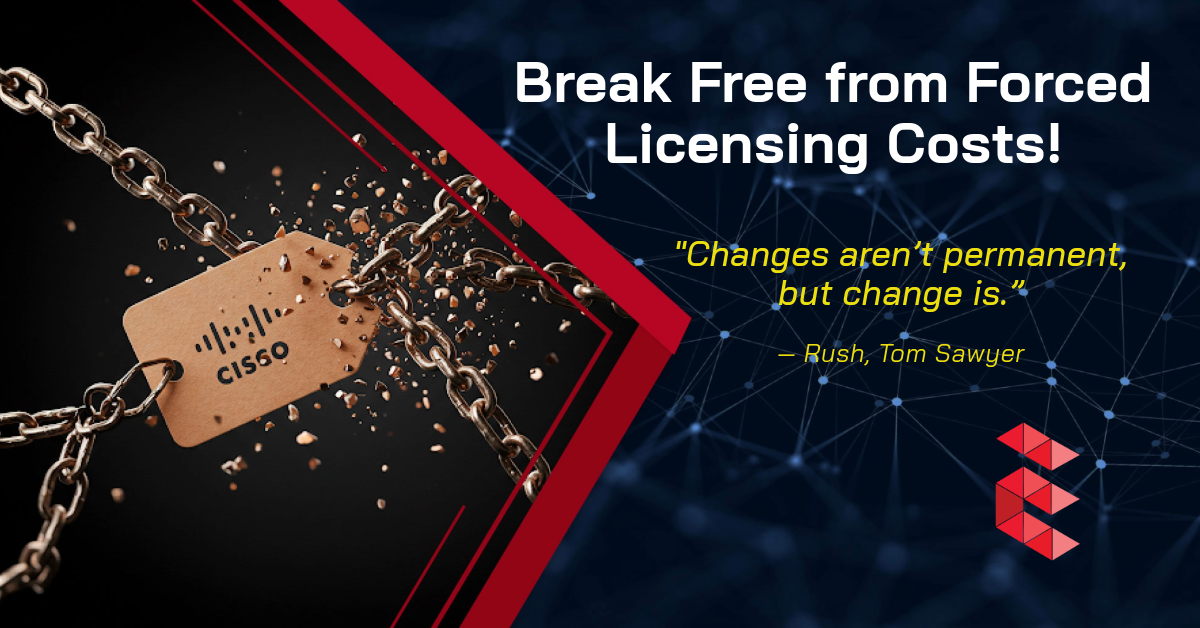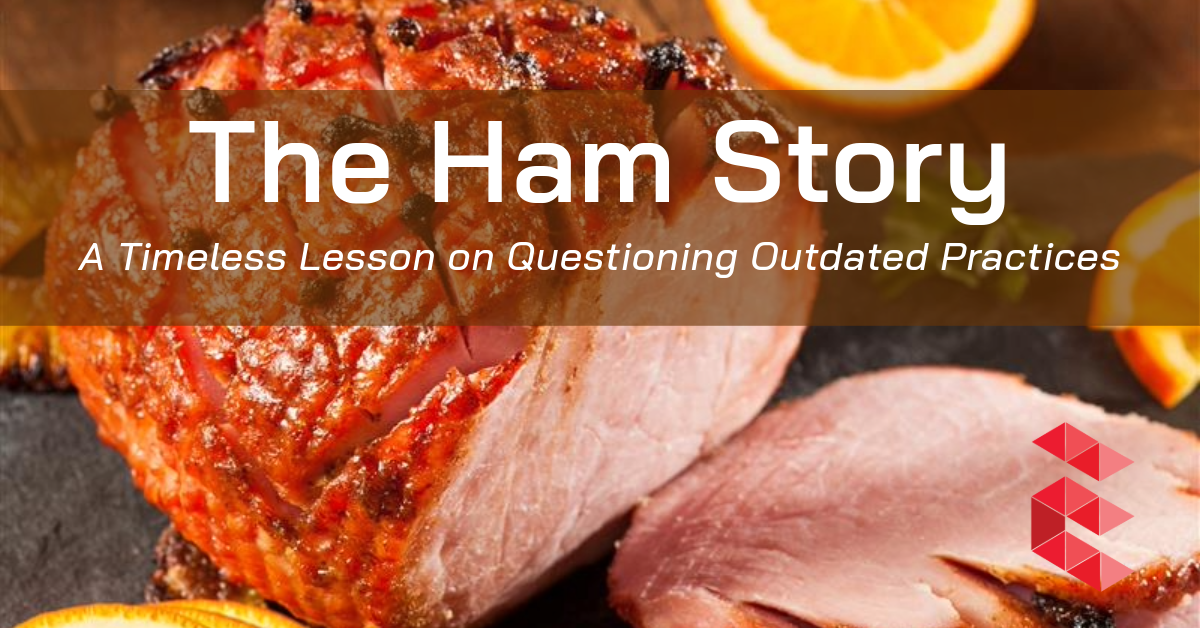Common Support Issues & Resolutions for Popular Cisco Devices
There’s no doubt Cisco is the most popular OEM in the industry. They build superior products that last. But like everything else, sometimes their...
2 min read
 Eric Sommers
:
02.10.2025
Eric Sommers
:
02.10.2025

"Changes aren’t permanent, but change is."
Rush fans will recognize this iconic lyric from Tom Sawyer. Could Geddy Lee have been unknowingly singing about Cisco? As Cisco pivots to rebrand itself as a software company, its track record is littered with failed initiatives: Cisco ONE, Cisco Prime, Smart Licensing—all optional, all unsuccessful.
This time, Cisco decided to force change. Starting with the C9200/9300 series, customers had to purchase DNA (now DNX) licensing, whether they needed it or not. This strategy raises a critical question: Is this shift here to stay, or will the market push back? The good news is, you have a choice
Millions of dollars have been wasted by businesses forced to purchase DNX licenses they didn’t need.
For companies without a Catalyst Center appliance, DNX licensing serves no real purpose. Yet customers found themselves stuck, needing to buy DNX to access the latest generation Cisco switches. Maintaining OEM support meant submission to Cisco’s new licensing model or facing the high cost of switching vendors.
Cisco’s latest strategy bundles hardware with subscription-based licenses and more expensive SMARTnet contracts. These are designed to help customers "adopt" subscription-based licenses, whether they want to or not.
The introduction of DNX licensing creates a separation between:
This separation proves what many suspected: perpetual licenses bundled with hardware can transfer with the hardware, undermining Cisco’s justification for subscription-based models.
Cisco continues to use fear, uncertainty, and doubt (FUD) to steer customers away from free-market hardware options. The story keeps changing:
If licensing is a problem today, why wasn’t it always? Companies like Edgeium, operating transparently outside Cisco’s channels, prove these concerns to be unfounded.
Did you know Cisco’s Enterprise Agreements are now at least 22% more expensive? Sometimes, they’re 54% higher.
This cost difference often comes down to Cisco’s confusing DNX licensing structure. Understanding the differences between DNX Essentials and DNX Advantage is critical to evaluating your options.
For a deeper dive into how these licensing tiers work and their features, check out our blog: Understanding the Differences: DNA Essentials vs DNA Advantage.
Here’s a quick cost comparison to illustrate the problem:
Why the increase? Cisco often sells DNX Advantage licenses even for Layer 2 access switches. You can’t mix DNX Essentials and DNX Advantage on the same network, forcing companies to overspend
You don’t have to be a guinea pig for Cisco’s pricing model. Edgeium offers cost-effective solutions that put you back in control:
Edgeium delivers the functionality you need without the licensing headaches, helping you optimize your network investment.
Cisco’s DNX licensing strategy forces unnecessary costs and complexity onto businesses. But you don’t have to play along.
Edgeium offers smarter, transparent alternatives tailored to your needs. Stop paying for features you don’t use. Let Edgeium empower your business with affordable, reliable networking solutions.
Ready to break free from DNX licensing? Contact us today to explore your options!
Subscribe to our Monthly Newsletter.
✅ Expert IT tips you can actually use
✅ Cost-saving solutions that boost ROI
✅ Straightforward insights — just value
All straight to your inbox.
No spam. No sales pitches. Just better networks.

There’s no doubt Cisco is the most popular OEM in the industry. They build superior products that last. But like everything else, sometimes their...

When Old Habits Don’t Fit Modern Realities One of my favorite stories is the "ham story." It’s an allegory about why we cling to outdated practices...

Let's recap. Why buy used? Cost savings, fast delivery, reliable hardware along with a better warranty and less expensive support. The newest...